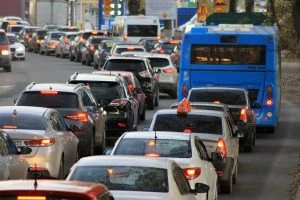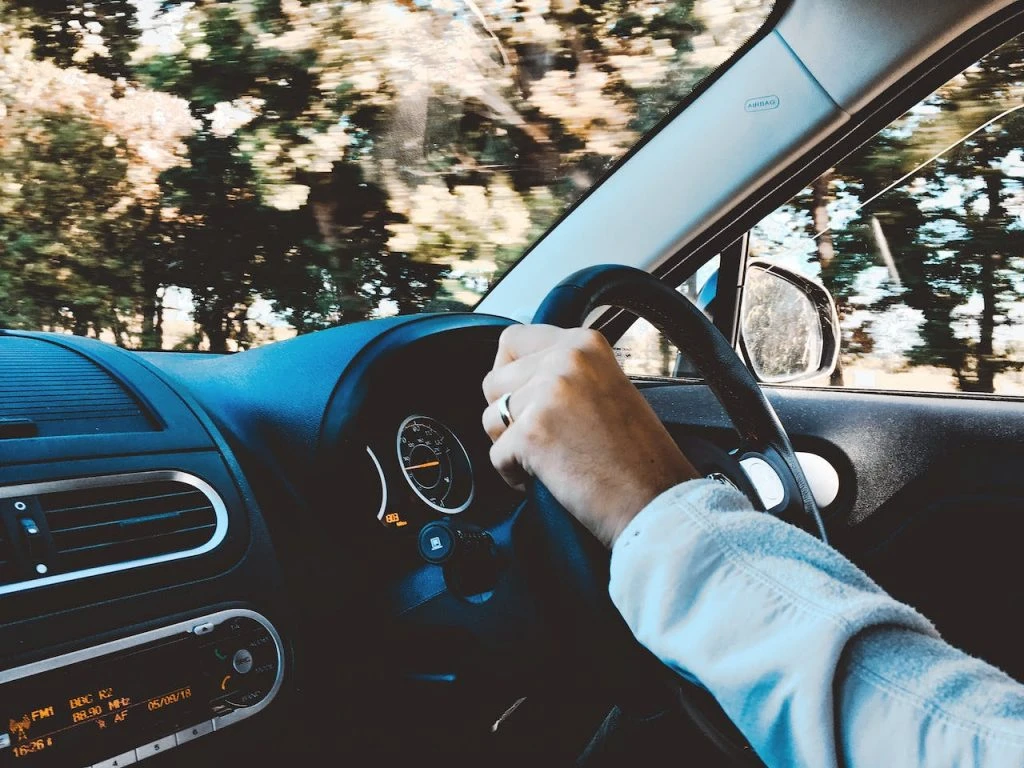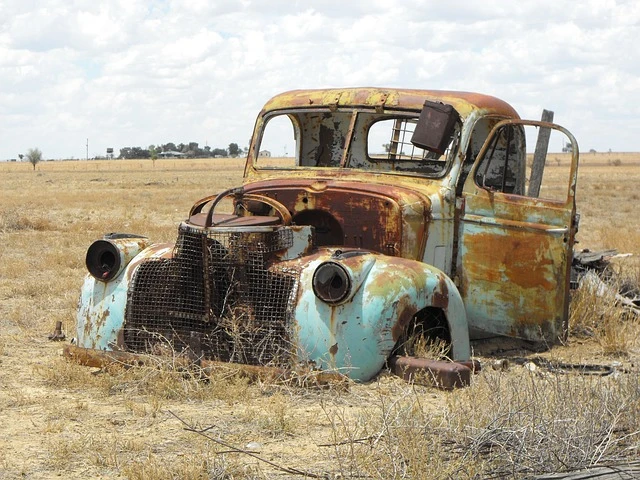Uncategorized
Tips To Cope With Congested Traffic

We’ve all been there, locked in grid traffic. And it’s always a bit tempting to slip past slower traffic, cutting back in front to get a little closer to the next set of lights before anyone else does. Yes, you’re with me!
These sorts of tedious, testing journeys may occur every day when you’re coming back from work or going to work. Traffic jams can occur after an accident has taken place or when people are heading away for the holidays all at once. It might be the popular school run, or it could be that everyone is dispersing all at once from the stadium car park after a big win for the Green and Golds. These phases of our journeys can be made to feel a little bit easier when you have planned well in advance and if you can keep an open mind that it won’t last forever. Being a little more flexible and giving yourself more time to get to your destination means that you can breathe a little easier and relax behind the wheel.
When the roads are busy, take your time and be aware of what’s happening around you. Try and give other road users the respect they deserve, too. There are others trying just as hard as you are to do the right thing and get to work on time. Yes, and they may not be as confident behind the wheel as you, so cut them some slack and don’t cut them off! If you keep a decent gap between your car and the car in front of you, you can look ahead and see what the traffic is doing, slowing gradually to maintain a nice steady flow with fewer sharp stop and start scenarios. It also helps to negate the all too common nose to tail accidents.
The same goes for merging lanes. Problems show up when some drivers stop in the merging lane to wait for a gap. Then there are those who would rather speed up and get ahead of another car in the line. Both of these styles aren’t cool, and both styles cause the traffic flow to come to a halt. Giving each other some space and time keeps the flow moving steadily, which is really what we all want anyway.
When you’re travelling home from a lazy day at the beach, or towing your caravan, or when maybe you just want to revel in the moment and soak up the scenery by travelling along at 70–80 km/h, well, that’s cool, but do keep in mind that there are other road users that have to make an appointment or who need to get to the start of a school rehearsal. Not everyone can travel this slow below what the open road limit allows, so use those mirrors and be aware of who needs to get past you. Show them respect because you are holding them up, and they are getting more and more frustrated at being dictated by you choosing to travel at a slower pace on a perfectly good piece of road with a much faster speed limit. Pull over and let them pass as often as you can, and don’t be the cause of a crash. Especially don’t be that driver who drives slowly along the windy bits or the parts with double yellow lines, then speeds up to the limit as soon as a passing lane or a clear straight comes along.
We all need to be prepared to react to someone’s mistake, poor judgement, or poor decision, whether the roads are busy or not. Keeping ourselves fresh and aware on the road while being courteous and respectful of others helps our journeys to be safe and enjoyable.
Ideas to help you stay calm:
- Play the right sort of music through your sound system – nothing too aggro. You don’t have to listen to soothing spa music, but anything that gets you on edge should be avoided.
- Practice diaphragmatic breathing, in through the nose and out through the mouth, trying to breathe with all of your torso.
- Remind yourself that all the other drivers are probably in the same boat as you and you all want to get home or to work. Maybe smile at some of the other drivers near you.
- Put on a really enjoyable podcast or audiobook. With a really good one, you might not want the journey to end!
- If the traffic is absolutely gridlocked and doesn’t look like it’s moving soon (e.g. if the road closes after a major accident), switch off your engine if applicable and move around while you’re waiting. Or get out your phone or laptop and do what you can for work. Just be aware of when the traffic starts moving again!
Paying For The Roads We Drive On

Across the Tasman, there are plenty of people getting annoyed at the increase in large, damaging potholes that have developed over the last few years on NZ’s tarmac road surfaces, even on main State Highways. Over there, for quite some time, EV owners have been getting a free ride on the coattails of motorists using an internal combustion engine (ICE) vehicle and who pay their fair share of road user chargers (RUCs) and/or a large portion of tax levied on the fuel at the pumps for the roading upkeep. This got me thinking about how should we be fairly introducing EVs to the masses while maintaining our roading systems? I realize it’s likely to be a bit contentious, but it’s not a question just for New Zealand’s new government to answer; it is also worth giving a bit time to thought and discussion here in Australia.
In Australia, we pay quite a lot of money into the pool of government funds that is received on yearly vehicle registrations. According to the Australian general insurance provider, GIO, the average cost for a family car is likely to be around $1240 per year. The excise tax (an indirect tax charged by government on the sale of a particular good or service) on the common fuels used in Australia (as of 1 February 2022) is $0.442 per litre. Introducing a direct road user charge as a replacement for fuel excise tax is something that has been bandied about at various high levels of government in Australia. The idea gains extra weight particularly when you consider the seemingly imminent transition from fossil-fuel and the ICE to electric vehicles (EVs).
A transition from ICE vehicles to EVs changes the maths and raises eyebrows for those harbouring the more philosophical questions involving fairness and equality for all socioeconomic groups. Without some form of direct user charge for the EV motorist, they would otherwise make no contribution to the roads’ upkeep.
If, in the future, we do end up going entirely electric, the current $12 billion or so of annual revenue from fuel tax will need to be replaced from some other scheme or source. It seems quite economically sound to simply charge for owning and using cars on a scale according to the number of kilometres driven.
Adding another aspect to your discussion on this topic down at the pub might earn you a free drink, so how about considering the damage caused to roads according to the weight of the vehicle driving over it? A UK report carried out by researchers at the University of Leeds suggested that EVs can damage roads at twice the rate of an equivalent-sized ICE vehicle. According to the data, the average EV adds 2.24 times more wear and tear to roads than an ICE vehicle of similar size. They also think that battery electric vehicles (BEVs) with a mass of over 2000 kg contribute 2.32 times the rate of road deterioration.
So could the fuel excise could be scrapped altogether, and all vehicles should be taxed via a user pays system based on the weight/mass of a vehicle? This sort of deal might actually help lower emissions in the long run because the lighter the car, the more frugal it is, EVs, hybrids, and ICEs all included. The cost of road repairs is also related to the CO2 emissions as well, so the fewer road repairs are required, the lower the emissions emitted – well, in theory anyway. What do you reckon?
Is Driving A Pain In The Neck?

Does this sound familiar? You’ve been on the road driving interstate for hours on end. You finally get to your destination but as you go to move, and it suddenly feels like someone’s driving white-hot nails into your neck or shoulder. Sometimes, this pain can come on long before you reach your destination.
This sort of thing can be one reason why some people prefer to fly rather than go on long-distance road trips. However, if you prefer to drive, as a lot of us do, and you want to see the scenery up close as you travel, then you probably want to stop the long hours of driving becoming a literal pain in the neck.
What causes neck pain when driving? Two factors are at play here. The first is that your head is kind of heavy, and your neck has to have the muscles to support it – if you’ve ever seen or held a newborn baby, you’ll know that we aren’t born with the ability to hold up our big brains inside our big heads, and these muscles have to be developed pronto. The second factor is that when driving, we tend to keep our heads and necks in more or less one position the whole time: on the road ahead, with the occasional head-check of the wing mirrors. Being forced into one position for a long time causes the muscles to cramp. I don’t know if the heads-up displays found in most modern vehicles make the problem worse or not.
The issue of support is easy enough to deal with. For a start off, adjust your headrest. Most of us know how to adjust the lumbar support (if your driver seat has this; many do) and the angle of the seat to the right position. If you don’t know how to do this properly, the idea is to have your seat back at an angle so your hips and shoulders are stacked above each other (the seat and the back should be at an angle of 90–100°). If you like to slump or slouch back, your neck will have to go at an angle it doesn’t like for long periods so you can see ahead. Fixing the angle of your seat and making sure that your lumbar support is sitting nicely in the small of your back will go a long way to avoiding neck pain while driving. Also make sure that the head rest is touching the back of your head.
However, even with the cushiest of seats in the perfect position, your neck will get tired and sore after a while. This means that you may need to take other steps during long-distance drives to avoid your neck aching.
The best tips I’ve found for avoiding neck pain while driving are the following:
- Get a neck support pillow. You might feel that you look silly wearing something that looks like you’ve just had neck surgery, but at least you’ll feel a lot more comfortable. These pillows will take some of the weight of your head so your neck doesn’t have to work so hard.
- Adjust your hand position during long drives. Yes, we all know that 10 to 2 is the best position to have your hands on the steering wheel, but keeping your arms in this position will cramp the trapezius muscles (that’s a big group of muscles in your neck and shoulder). During a long drive, change your hand positions around.
- Chill out. Many of us tend to clench our jaws and tense our shoulders when we feel stressed. This leads to agonizingly tight shoulders. As you drive (assuming that you’re not in a high-pressure situation), do a quick survey of your neck, jaw and shoulders. Are you holding your stress in these parts of your body? Do a few deep breathing exercises as you drive to help dispel the stress.
- Massage. Use self-massage (with one hand on the back of your neck), a massage seat or a helpful passenger riding shotgun to give the muscles in your shoulders and neck a quick squeeze and rub.
- Move your neck. Even while you’re driving, you can move your neck and shoulders – without taking your eyes off the road. Shrug your shoulders and try to roll them. Do that neck roll and one-sided shrug you see tough guys and gals in the movies do before a fight. Slide your neck from side to side while staying level like a belly dancer. Tilt your head from side to side like a stereotypical Indian. Nod and shake your head. As long as you keep your eyes on the road ahead, you’re all good.
- Take a break! The fact that your neck is sore is a sure sign that you’ve been sitting in one position for too long. Your legs could probably do with a break as well. Pull over and stretch your legs. As well as all the neck exercises mentioned above, remember to move your arms and do a few twists of your spine as well.
Obviously, if the traffic is heavy or if you’re driving through the middle of the city, then you may not be able to do all of these. However, do what you can when you can, and you’ll find that driving is less of a pain in the neck.
So You Want To Be An Uber Driver?
Quite a few of you may have considered getting a few extra bucks out of your car by signing up as a driver for the rideshare scheme Uber or one of the similar schemes, such as Ola. But is your car suitable for this? What’s more, if you are seriously considering the possibility, then what do you need to know when you go to buy a new car?
First of all, let’s get the disclaimers out of the way. I’m not affiliated with Uber, have never been an Uber driver, haven’t even been an Uber passenger, and get the urge to spell it the proper German way as Über. My family members aren’t Uber drivers, although my son once thought about it and my brother used to operate a bicycle rickshaw taxi (and he’s not even Chinese). I’m not saying that you should be an Uber driver or that you shouldn’t be an Uber driver, or that you should consider some other rideshare service such as Ola or DiDi, etc. It’s completely up to you whether you should or shouldn’t, and I’m not going to give you any advice in that direction.

However, what I’m hoping to do with this article is to let you know what sort of car you’ll need if you want to sign up to the programme as a driver. Because this company values its reputation – and no wonder, as it involves (a) getting into the car of a stranger (b) who you have only met online – it has strict requirements for the vehicles as well as the people who drive them. So if your car doesn’t meet the grade, you won’t be able to hire yourself out as a driver.
The first requirement is that the vehicle in question has to be no more than 15 years old, with the age limit dropping to no older than 7 years for the Uber Comfort service and no older than 6 years for the Uber Premier service. So if you own an old classic, I’m sorry: Uber isn’t for you. However, if you own a classic car in good condition, you can still get into the car hire game by making your classic available as wedding car – something that really deserves an article of its very own.
The next thing that this rideshare company looks at is the number of doors your car has. Sorry, but if you own a hot three-door hatch or a two-door sports car, it won’t meet the requirements. The minimum number of doors is four.
Seating is also one of the factors that is important, for obvious reasons. Single-cab utes are out of the picture and not just because they usually only have two doors. They’re also out because they can only seat a few people, and the minimum number of passengers that an Uber (or should that be “a Uber”? Depends on whether you pronounce it Oober or Youber) can take is four. Surprisingly, there’s also a maximum number of passengers that eligible cars can have as well, namely seven, meaning that the car can have up to eight seats (one for the driver, of course). If you own one of those minivans that seats up to 12 people, it won’t be eligible.
All cars have to be in proper working order, which includes the windows and the air-conditioning (which would have ruled out one second-hand van I once owned and was very glad to get rid of). It also should not have any cosmetic damage, as nobody wants to turn up to a party in a shabby rustbucket. It also has to pass its roadworthiness inspection, but that’s true of all cars.
Safety, as you can imagine, is very important, so one of the requirements for Uber cars, in Sydney at least, is that they must have a five-star ANCAP rating. If you’re not sure if your vehicle does or doesn’t, you can use the handy search tool provided by ANCAP.
Quite a lot of vehicles meet the criteria, so a wide range of vehicles is part of the Uber “fleet” (you could quite justifiably call that a private fleet, but we’ve bagged that name!). Of the many cars that are part of the system, the most popular are the following:
- Toyota Camry
- Toyota Corolla
- Mitsubishi Outlander
- Mazda 3
- Toyota RAV4
Well done, Sherlock… you’ve probably already figured out that this list of the most popular Uber cars overlaps with the most popular cars in Australia. Which makes sense, statistically speaking.
Different types of Uber service also have other requirements. For example, Uber Premier likes not just late-model four-door saloons, but they also have to have extra legroom for passengers, take no more than four passengers and be what Uber calls “high end” vehicles. What it considers to be “high end” is subjective, but all the usual suspects make the grade: BMW, Mercedes-Benz, Lexus, Porsche, Volvo…
Uber has a list of eligible cars for each category on one of its information pages (you can find it at this link). This list is pretty extensive and quite frankly, if you own a Ferrari, then you probably don’t need to pick up extra cash by joining a rideshare scheme. Unless you want to, of course!